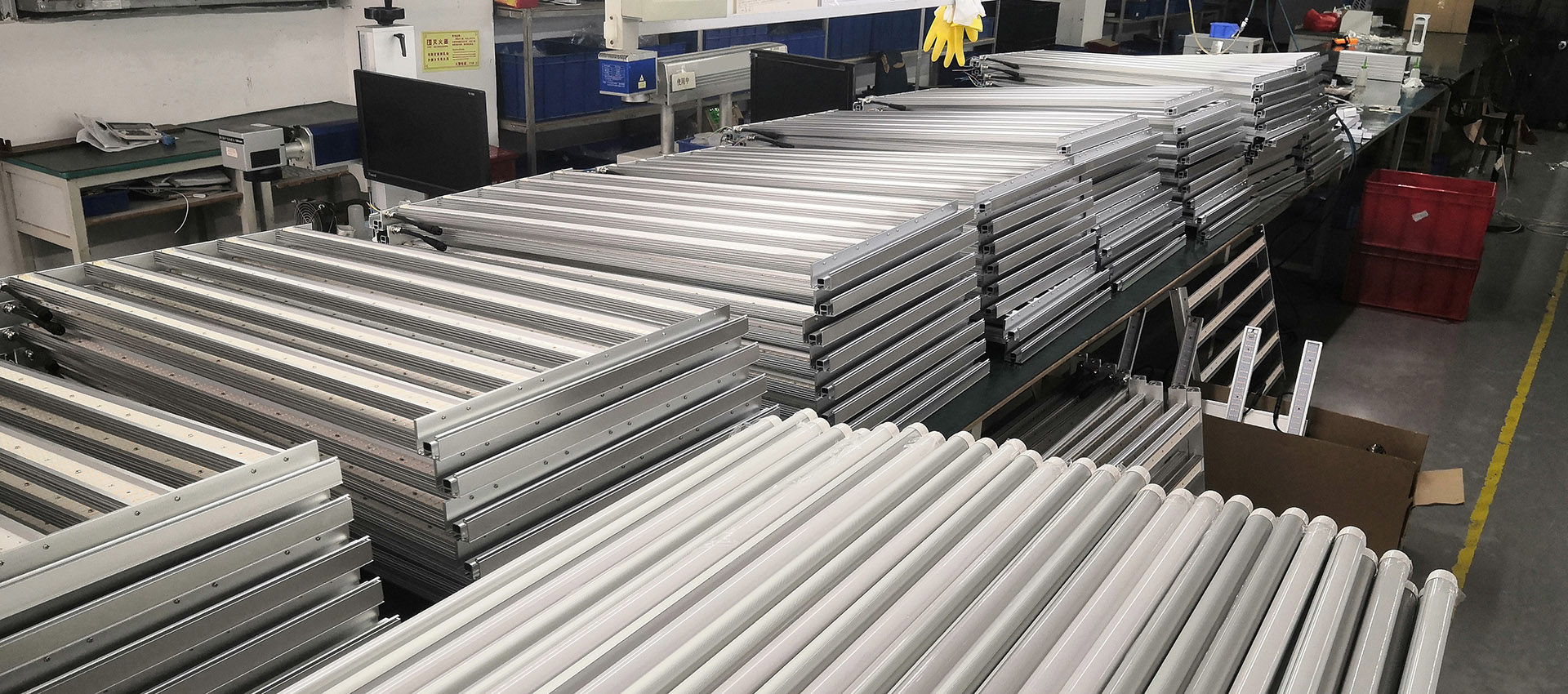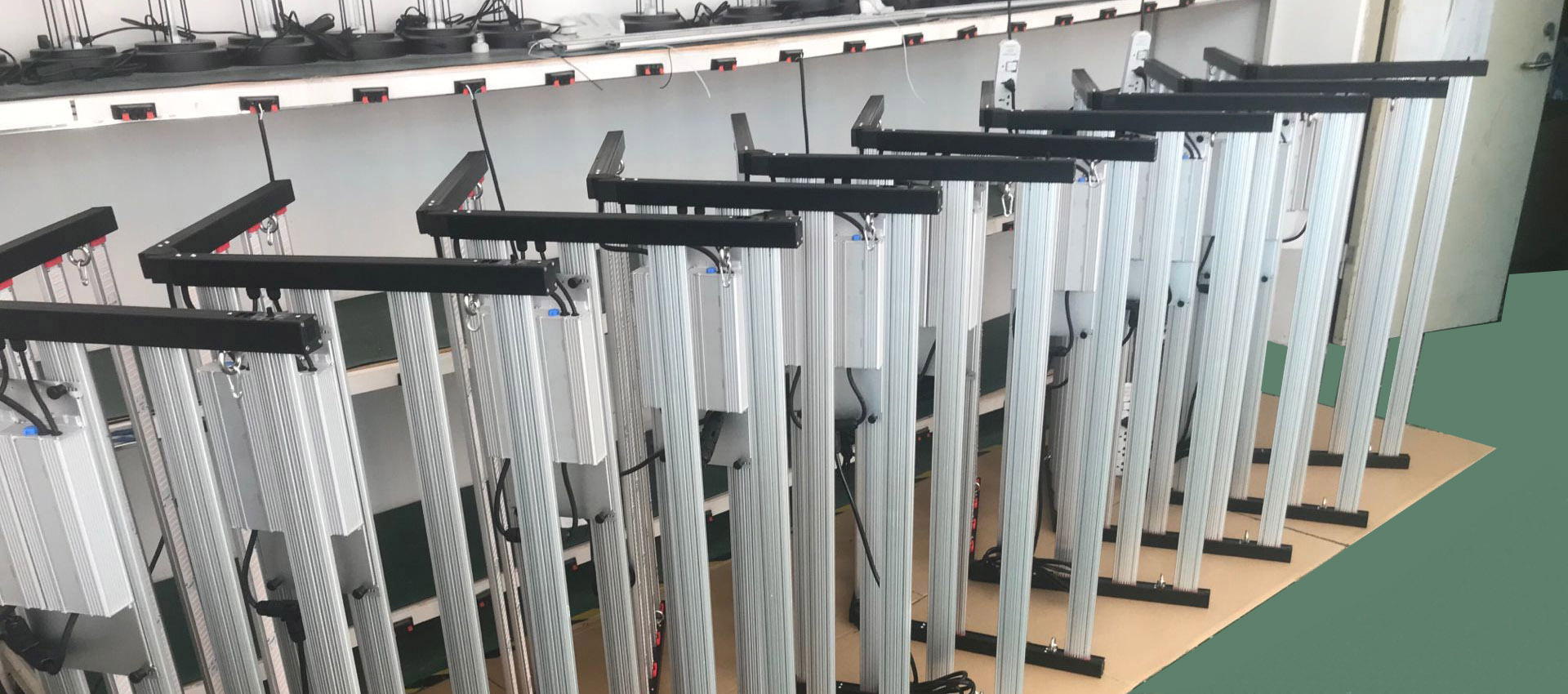Growing indoor plants has many benefits: space decoration, absorbing harmful substances, releasing oxygen, making indoor air fresher; the transpiration of plants can increase indoor humidity and improve the dry indoor environment in autumn and winter. It can be said to be a natural humidifier.

However, due to the lack of sunlight, growing plants indoors is not an easy task. Light is one of the necessary conditions for the normal growth of plants, so we often keep plants on balconies, windows and other places where they can be exposed to sunlight, or we often move them to places with sunlight for supplementary light, but these are not enough.
Plant fill lights can very well solve the problem of lack of light for indoor planting!
The current mainstream plant fill lights include LED lights and high-pressure sodium lights. In greenhouse planting supplementary lighting, these two products are widely used. In home gardening, LED plant fill lights are widely used. This is because sodium lamp fill lights are accompanied by a large amount of heat radiation when they emit light. They should not be too close to the plants, as they can easily burn the plants. The LED fill light is a cold light source. When it emits light, it is almost not accompanied by heat radiation, making it more suitable for home indoor planting.

The quality of LED plant growth lights on the market is uneven. When choosing, you should focus on the following points:
Light intensity
The purpose of choosing plant growth lights for indoor planting is to replace sunlight to provide plants with the light required for photosynthesis. The intensity of sunlight is very high. Even in outdoor environments, it can reach tens of thousands of lux (lx) even on cloudy days and on sunny days. The light intensity can reach more than 100,000 lux, so the first factor to consider when choosing a plant fill light should be that it can provide sufficient light intensity.
In LED lighting technology, the light emitted by the LED light source can be redistributed through lenses to control the irradiation range within a certain area. This can greatly improve the light utilization rate and increase the light intensity. A good lens design can even ensure equal illumination within the illumination range (that is, the illumination intensity of the illumination plane is basically the same), which can effectively avoid problems such as uneven growth and plant deformation caused by differences in illumination intensity. The fill light with lens design can make the light act on the plants without shining on other places in the room, avoiding waste and unnecessary light pollution.
Light quality
Light quality refers to the components of the spectrum. Currently, there are two main types of LED growth lights on the market, one is full spectrum (the viewing angle effect is close to that of white light), and the other is red and blue spectrum (the viewing angle effect is more purple). From the perspective of actual fill light effect, both can meet the requirements; from the perspective of health, full spectrum is more suitable. This is because the blue light content in the red and blue spectrum is high, and the stray light it generates is more harmful to the human eye. This is the same reason why our eye protection table lamps emphasize that there is no blue light hazard.
Structure
When choosing a plant fill light, you should consider whether its structure can be suitable for different indoor planting scenarios. Window sills, corners, planting racks, tabletops, etc. are all common scenes for indoor planting. Currently, there are table lamp type, floor lamp type, tube lamp type, clip lamp type and other fill lights with different structures on the market. You need to make a reasonable choice according to your own planting scene. If the planting scene is relatively unstable, try to choose a clip-type structure. This structure can be applied to almost all indoor planting scenes.
The necessity of supplementary lighting in greenhouses
In recent years, with the accumulation and maturity of knowledge and technology, plant growth lights, which have always been regarded as a symbol of high-tech modern agriculture in China, have gradually entered people’s field of vision. With the deepening of spectral research, it has been discovered that light in different wavelength bands has different effects on plants at various growth stages. The purpose of lighting inside a greenhouse is to extend enough light intensity throughout the day. Mainly used for planting vegetables, roses and even chrysanthemum seedlings in late autumn and winter.
On cloudy and low light intensity days, artificial lighting is a must. Give crops at least 8 hours of light per day at night, and the light time should be fixed every day. But lack of night rest can also lead to plant growth disorders and reduced yields. Under fixed environmental conditions such as carbon dioxide, water, nutrients, temperature and humidity, the size of the “photosynthetic flux density PPFD” between the light saturation point and the light compensation point of a specific plant directly determines the relative growth rate of the plant. Therefore, an efficient light source PPFD Combination is the key to plant factory productivity.
Light is a kind of electromagnetic radiation. The light that the human eye can see is called visible light, ranging from 380nm to 780nm, and the light color ranges from purple to red. Invisible light includes ultraviolet light and infrared light. Photometry and colorimetry units are used to measure the properties of light. Light has both quantitative and qualitative attributes. The former is light intensity and photoperiod, and the latter is light quality or light harmonic energy distribution. At the same time, light has particle properties and wave properties, that is, wave-particle duality. Light has visual properties and energy properties. Basic measurement methods in photometry and colorimetry. ① Luminous flux, unit lumens lm, refers to the sum of the amount of light emitted by a luminous body or light source in a unit time, that is, luminous flux. ②Light intensity: symbol I, unit candela cd, the luminous flux emitted by a luminous body or light source within a single solid angle in a specific direction. ③Illuminance: Symbol E, unit lux lm/m2, the luminous flux illuminated by the luminous body on the unit area of the illuminated object. ④Brightness: Symbol L, unit Nitr, cd/m2, luminous flux of a luminous object in a specific direction, unit solid angle, unit area. ⑤Luminous efficiency: Unit is lumens per watt, lm/W. The ability of an electric light source to convert electrical energy into light is expressed by dividing the emitted luminous flux by the power consumption. ⑥Lamp efficiency: Also called light output coefficient, it is an important standard for measuring the energy efficiency of lamps. It is the ratio between the light energy output by the lamp and the light energy output by the light source inside the lamp. ⑦Average life span: unit hour, refers to the number of hours when 50% of a batch of bulbs are damaged. ⑧Economic life: unit hour, taking into account the damage of the bulb and the attenuation of the beam output, the comprehensive beam output is reduced to a specific number of hours. This ratio is 70% for outdoor light sources and 80% for indoor light sources such as fluorescent lamps. ⑨ Color temperature: When the color of the light emitted by the light source is the same as the color of the light radiated by the black body at a certain temperature, the temperature of the black body is called the color temperature of the light source. The color temperature of the light source is different, and the color of the light is also different. A color temperature below 3300K has a stable atmosphere and a warm feeling; a color temperature between 3000 and 5000K is an intermediate color temperature, which has a refreshing feeling; a color temperature above 5000K has a cold feeling. ⑩Color temperature and color rendering: The color rendering of a light source is indicated by the color rendering index, which indicates that the color deviation of an object under light compared with the color of the reference light (sunlight) can more fully reflect the color characteristics of the light source.

